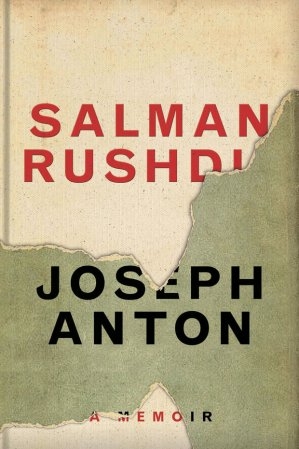
The Great White North Blues
Photos by Randy MacNeil / Feature photo: Colin Linden
The Mississippi Delta, smoky clubs in Chicago, wailing out windows in Memphis and heating up the snowy streets of Toronto, one of these things is not like the other when it comes to what people generally associate with The Blues. Ottawa photographer Randy MacNeil and his partner Francine Aubrey are looking to change that with A Portrait of Blues in Canada, a book that shows just how much of the Blues are in the Great White North.
MacNeil is from Cape Breton, a place where music isn’t just in the air, it’s in the soil. His father would host many a kitchen party where Nova Scotia legends like Buddy MacMaster could stroll in on any given night. Naturally, you’d think MacNeil would pick up a fiddle or guitar. Kids, after all, are practically born with them in hand out there. Instead, he took to photography, snapping his first picture with an old 110mm point and shoot that had been lying around the house. He’d get his own in his teens, a Pentax K1000 35mm. He remembers this extra appendage fondly.
Music, he says, was everywhere but he didn’t want to play it, he wanted to document it, finding inspiration in the photographs shot by Jim Marshall in early issues of Rolling Stone.
“He captured moments in history — from his iconic shots of Johnny Cash giving the finger to Jimmy Hendrix setting his guitar on fire, to Joni Mitchell, Janice Joplin and so many more. The whole concept of documenting/photographing music history really excited me,” says MacNeil.

While he was surrounded by the more traditional sounds of Cape Breton, is was venturing into an Inverness Legion Hall one evening that changed the path of MacNeil’s music loving trajectory. He was wandering the streets with his cousin when he was hit by a force he’d never forget. It was a guitar and the sound coming from it was one he’d never heard before. It was howling!
“We sat on the back steps of the Legion and listened to the Matt Minglewood and Sam Moon show,” recalls MacNeil. “I really loved their style of music. I later found out that music was Blues music.”
It would be years later when this music would help MacNeil through one of the most difficult periods of his life. Now in Ottawa, both his father and mother would succumb to cancer at the same time. He would leave the hospital after visits and head straight to the Rainbow Bistro to wash away his sadness with a strong glass of the Blues, an escape from the heartache of watching his parents fade away.
If you were to ask him to name a few of his favorite Blues musician you better have an hour or so to spare. MacNeil doesn’t swim in the shallow end when it comes to how entrenched he became in the music. There are the legends, of course, like Buddy Guy and Robert Johnson he’ll tell you that you just have to listen to but there’s also Little Walter, Lazy Lester and Clarence “Gatemouth” Brown.

But what about Jackie Washington, Long John Baldry, Big Dan McLean, Suzie Vinnick and Buck Tingley? Ever hear of the infamous “Prime Minster of the Blues”, Mr. Dutch Mason? These are just a few of the Canadian Blues greats –along with Colin James, Jeff Healey and Colin Linden– discovered as he cut deeper into the music.
“Blues in Canada is a relatively new art form,” says MacNeil. “There are different styles of Blues played across the country. Some are hardcore, old school artist and others took the art form and have put their personal take on it to create very unique and innovative sounds.”
Though he knew from early on that he wanted to photograph music, MacNeil really began to turn his focus on concert photography in the mid-80s. Memorable shows that stand out have seen him snapping away at James Brown, Ray Charles and “The Voice of the Civil Rights Movement”, Odetta.
No matter what he was shooting, he’d stick to his own style honed over the years and enhanced by the tutelage of teachers like Serge Gilbert. MacNeil works mainly in black and white because of the depth he achieves. That and, he admits, a bit of nostalgia. All of the pictures of his folks are black and white. Also, when digital came around, he opted to stick to film.
“Everyone was telling me I needed to go digital. My colleagues were always telling me. I’d tell them I was a dinosaur, to leave me be. In my mind, I was building a body of work and I wanted to keep the same standard medium throughout,” says MacNeil, adding that he did eventually buckle and snag a digital camera. While it provides him with more immediate access to his shots at a cheaper cost, he still prefers the latitude film offers.
Eventually, he’d developed enough of a body of work to seriously consider putting some of it into a book. MacNeil knew exactly what it would be about, something that could introduce more Canadians to what he’d known for years: Canada’s got The Blues!
“I wanted to shine a light on Blues here. The players and the big name acts coming through town were absolutely worthy of being documented for historical purposes as well as promoted across our country and internationally. There are blues buffs and fans all around the world who appreciate our Canadian artists.”
Still, he was a photographer and didn’t know exactly how to get this idea into a history somebody could flip through after picking it from a nearing coffee table. Then came Francine. Aubrey, a musician herself, understood MacNeil’s concept. She was able to see things, as well, from an artists’ perspective. She was also keen on self-teaching herself some of the more technical aspects of book making.

“Because of the film to digital aspect, she had to learn how to import and transform the flat digital scanned jpg file back to the richness and depth of the original black and white prints, and then she had to learn book design and publishing,” says MacNeil of Aubrey’s work. “I think she did pretty well for her first project. She basically did it all. She’s the reason the book got produced and published.”
During the process, MacNeil learned just how extensive his output has been. The two went through thousands upon thousands of photos and barely scratched the surface. It was an arduous task but they eventually narrowed down what would become the 260 pages of A Portrait of the Blues in Canada.
What started out 5 years ago as a photo book became more than a visual documentation. In many instances, MacNeil had the musicians themselves answer two questions that would form the text which he would marry to his photographs:
- Who do you think most influenced the Canadian blues music scene or, in other words, who put blues on the map in Canada?
- What impact/effect has playing the blues in Canada had on your family and/or personal life? Have you had to make many sacrifices to persevere in the blues?
“Their answers and only their answers accompany the photographs,” explains MacNeil. “With the story told by the artists themselves, the reader is led through a rich and intimate view into the Canadian blues music scene and its history.”
The project has been very rewarding, especially being able to showcase some Quebec musicians not many know outside of their own province. Guy Bélanger, Nanette Workman, Steve Hill and Angel Forest, for example. Mainly, for MacNeil, he’s happy to see all of his loves snapped between the hardcover cover borders that embrace a history he’s proud to share.
“I love music. I love history, and I love how a picture tells a story. And besides, it’s my passion,” says MacNeil, hinting that a second volume could be on the way.








